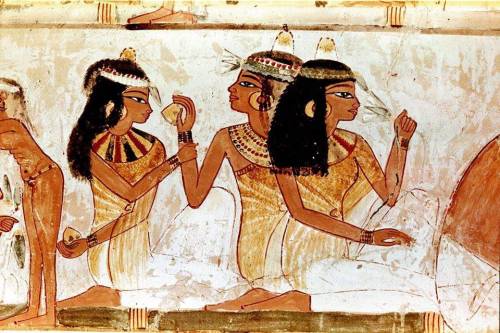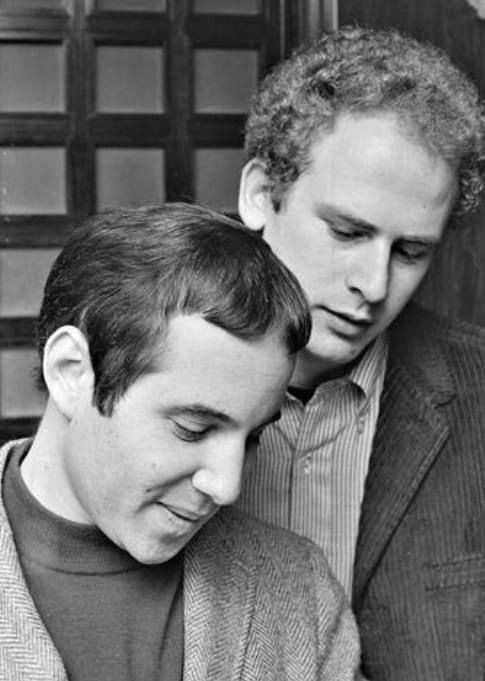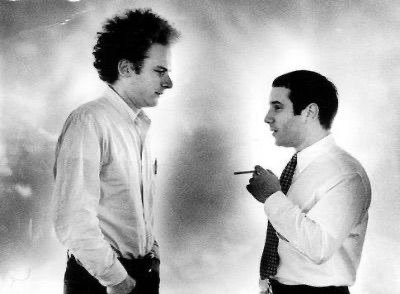
Daughter of Loki | Heart of Sekhmet | 36 yo, pagan since 2009 | Spider Witch | Selkie | Simon & Garfunkel addict
789 posts
Importance Of Fragrance In Ancient Egyptian Religion
Importance of fragrance in Ancient Egyptian religion

Incense in myth
Egyptians believed that all beautiful scents originated from the bodies of the gods. They viewed resins and perfumes as tears, sweat, spittle or bones of the Netjeru. Fruitful trees were identified with mother goddesses and their resins could have been regarded as their menstrual blood. Those bodily fluids would be considered impure if they came from a human but coming from the gods they were beautiful, fragrant and sacred.
Some gods were associated with specific fragrances more than with others. One of such gods was Osiris - in the myths his son Horus offered him „his sweet smelling Eye, as a token of his victory over Set”. Egyptians identified the Eye of Horus with incense, particularly labdanum. Incenses could also embody Amun, „the hidden god” of invisibilie life force and air.
Egyptian pantheon included many patrons of fragrance: Merehet, goddess of unguents, Shesmu, divine patron of perfume production, Nefertem, god of incense and medicine, symbolized by a fragrant blue lotus flower, Hathor, luxury-loving goddess of femininity, joy and pleasure or even protective cat goddess Bast. Cultic importance of incense
The Egyptian word „snTr” or „s nTr” had two distinct meanings: 1) to cense, incense and 2) to make divine, to cause to make divine. Incense was thus used to provoke the manifestation of a deity during a ritual, cause them to be present there with their followers. It could also be used as a deifying agent in the process of mummification and in Opening of the Mouth ceremony (used to animate a mummy or a statue and enable them to use senses, speak and consume offerings). It is speculated that incese may not have been as much an offering to sustain the gods as a tool to feel their presence beside you.
“With all of the other senses, you think before you respond, but with scent, your brain responds before you think,” says Pam Scholder Ellen, a Georgia State University marketing professor. The sense of smell is also considered to be the most closely related to emotional reactions. The olfactory bulb is directly connected to the limbic system in the brain, which is the system related to immediate emotion in humans. 75% of emotions are generated by smell.
„To cause to make divine through smoke” by Renata Tatomir
Incense was utilised in large amounts in Egyptian temples. Plutarch mentions in his writing that frankincense was burned there in the morning, myrrh at noon and kyphi in the evening. Elliott Wise speculates that incense could be used to further vivify statues of the gods and imitate the sweat, tears and body odour of a living being, as much as to alter mental state of the ritual’s participants. Being a luxurious commodity often imported from distant lands it underlined the importance and influence of deities, giving them a perceivable aura of power. Censers used by Egyptians were often shaped like a human hand performing the gesture of offering.

Kyphi
A huge favorite of the ancients and the highest prized incense blend in Egypt was kyphi - or kapet as Egyptians called it. It was used for religious, magical and medical purposes since the Old Kingdom, first mentioned in Pyramid Texts as a substance that the king will enjoy in his afterlife. But it was more than just a luxurious and elegant offering to the gods. Plutarch appreciatively describes it’s relaxing properties and ability to “loosen daily sorrows” as well as mentiones that it was added to drinks to cleanse the body - kyphi was edible and sometimes used as a medicine. Writings mention two different types of kyphi - lunar and solar; their long and complex (28 and 36 ingredients respectively) recipes recorded by Paul of Aegina in the seventh century AD survive to this day.
Here are a few other recovered kyphi recipes: Edfu Temple
Edfu Temple kyphi was made of 16 ingredients over the course of 12 days, symbolizing 16 body parts of Osiris, gathered by Isis and Nephthys for 12 days.
The ingredients were: -raisins -wine -honey -frankincense -myrrh -mastic -pine resin -sweet flag -aspalathos -camel grass -mint -cyperus -juniper berries -pine kernels -pekers -cinnamon
Papyrus Ebers
-honey -frankincense -mastic -sweet flag -pine kernels -cyperus grass -camel grass -inektun -cinnamon
Papyrus Harris
-Raisins -Wine -Honey -Mastic -Pine Resin -Camel Grass -Mint -Sweet Flag -Cinnamon
Sources
„An Odor of Sanctity: The Iconography, Magic, and Ritual of Egyptian Incense” by Elliott Wise
„Perfume” by Lise Manniche
„Incense as a Transdisciplinary Vehicle in Ancient Egypt and Christianity. Similarities and Differences” by Renata G. Tatomir
„To cause to make divine through smoke: Ancient Egyptian incense amd perfume. An inter- and transdisciplinary re-evaluation of aromatic biotic materials used by the Ancient Egyptians” by Renata G. Tatomir

-
 fiowerish liked this · 10 months ago
fiowerish liked this · 10 months ago -
 tzum248 liked this · 10 months ago
tzum248 liked this · 10 months ago -
 spectralcowgirl liked this · 1 year ago
spectralcowgirl liked this · 1 year ago -
 noodleddragon reblogged this · 1 year ago
noodleddragon reblogged this · 1 year ago -
 noodleddragon reblogged this · 1 year ago
noodleddragon reblogged this · 1 year ago -
 noodleddragon reblogged this · 1 year ago
noodleddragon reblogged this · 1 year ago -
 tsavo-witch-revived reblogged this · 1 year ago
tsavo-witch-revived reblogged this · 1 year ago -
 tsavo-witch-revived liked this · 1 year ago
tsavo-witch-revived liked this · 1 year ago -
 oikoumenee reblogged this · 1 year ago
oikoumenee reblogged this · 1 year ago -
 bd6686 liked this · 1 year ago
bd6686 liked this · 1 year ago -
 rhaheemah777 reblogged this · 1 year ago
rhaheemah777 reblogged this · 1 year ago -
 missanthropicprinciple liked this · 1 year ago
missanthropicprinciple liked this · 1 year ago -
 catherinedefrance liked this · 1 year ago
catherinedefrance liked this · 1 year ago -
 ochmoverto liked this · 1 year ago
ochmoverto liked this · 1 year ago -
 maistelnc liked this · 1 year ago
maistelnc liked this · 1 year ago -
 sp4c3b4rbi3 liked this · 2 years ago
sp4c3b4rbi3 liked this · 2 years ago -
 enphis-m liked this · 2 years ago
enphis-m liked this · 2 years ago -
 witchbitchheadedtoaditch reblogged this · 2 years ago
witchbitchheadedtoaditch reblogged this · 2 years ago -
 mkhattabfan reblogged this · 2 years ago
mkhattabfan reblogged this · 2 years ago -
 diggingtheoldies reblogged this · 2 years ago
diggingtheoldies reblogged this · 2 years ago -
 lifeofaweed liked this · 2 years ago
lifeofaweed liked this · 2 years ago -
 american-griot reblogged this · 2 years ago
american-griot reblogged this · 2 years ago -
 american-griot liked this · 2 years ago
american-griot liked this · 2 years ago -
 mjrydsfast231 reblogged this · 2 years ago
mjrydsfast231 reblogged this · 2 years ago -
 mjrydsfast231 liked this · 2 years ago
mjrydsfast231 liked this · 2 years ago -
 cannsoup liked this · 2 years ago
cannsoup liked this · 2 years ago -
 vadimmozevvelnik liked this · 2 years ago
vadimmozevvelnik liked this · 2 years ago -
 smoothserg reblogged this · 2 years ago
smoothserg reblogged this · 2 years ago -
 infernally liked this · 2 years ago
infernally liked this · 2 years ago -
 literamour reblogged this · 2 years ago
literamour reblogged this · 2 years ago
More Posts from Parsley-sage-rosemary-n-thyme
I love this. I truly do. Because I also feel like the love has always been and always stayed there, between them, through all the bullshit and animosity and such.
I do feel that love is the key to their relationship, whatever that is.
what's your expert opinion on the post-catch-22 incident aka everything that went wrong after their big fight? like, ive been pondering about their downfall for a while now, with art's poem page kind of hinting his longing for paul after/during that bit and the only living boy/frank lloyd wright/why don't you write me trilogy. they were one crazy couple. anyways, id like to know! (since there's a potential field study that can be made to solely analyze their psyches and body language together lol)
Brace yourself—this is going to be a long one without a whole lot of coherent thoughts, but here’s a few things that come to mind:
I really don’t think it was all miserable during the recording of Bridge. There’s a priceless bootleg of So Long, Frank Lloyd Wright where they can barely get through the song without fits of laughing. ( https://m.youtube.com/watch?v=PeMOGkvukuI ) And while Art reportedly didn’t realize the meaning of So Long, Frank Lloyd Wright for a while, I can’t imagine that he didn’t pick up on the meaning of Why Don’t You Write Me while they were recording it. To an extent, it seems that they were able to detach themselves from the meanings of those songs while recording—Art said in 2020 about So Long, Frank Lloyd Wright that “only after the fact did I start thinking about things like that he wrote it to me. You could say it's a song of rejection. You could say all kinds of shit. I never got into that. I got into the melody.” And when the tension did finally boil over beyond repair, it seemed like a combination of everything that had built up over almost two decades of friendship and a few inciting incidents, as you mentioned.
A part of me can’t fathom how they could walk away from each other and from the top of the world like that. But I also can’t imagine singing and being best friends with someone since grade school, losing them right after getting a taste of fame, finding them again, going from college kids to worldwide fame practically overnight, being together almost 24/7 during tours, being under tremendous pressure to create perfection all the time, having that soulmate connection clash with the underlying bitterness—the list goes on. That’s a hell of a lot for both of them to have lived through by age 28, and it’s not surprising that the idea of forever being tied to each other was too much to bear.
I don’t think Art had bad intentions during the filming of Catch-22, but it’s likely that the combination of finally doing something on his own/not being second fiddle for once and the leftover bitterness from the Tom & Jerry days pushed him to take it a little too far afterwards and sign on for Carnal Knowledge without telling Paul. I think neither of them had any idea how to improve beyond the virtual perfection of Bridge, and I think Paul especially believed that there was really nowhere else to go as a duo and that his only chance to improve as an artist was to strike out on his own. We’ve seen a million times over how willing and able he was to branch out musically and demonstrate his absolute genius, and I don’t doubt that he knew that going at it alone was the only way to get there. That’s not to say that I don’t feel bad for Art, because I do. It seems that he really genuinely didn’t know that the “break from Paul” would turn into a permanent split, and getting left at the top without realizing it must’ve been extremely difficult to process.
Going back to the trilogy of songs you mentioned, Art described the feeling I get from those songs better than I can in a 2020 American Songwriter article. “There you were, the architect. He’s telling you he can’t believe you’re gone. This friendship has come, and now… it’s fucking gone. And he can’t believe it. And he’s giving you, in your mouth, these lyrics to sing. What a world.”
But I will always fall back on The Only Living Boy in New York as the overall story of the end of S&G that I dearly hope is true—that the love and friendship did remain even after the musical partnership fell apart. I’ve only ever interpreted that song as genuinely loving, with no bite or sarcasm on Paul’s part. Everything about it, from “I know that you’ve been eager to fly now” to what almost sounds like a sob in “like it shines on me” to the beautiful twist of Art being the one to feature most prominently on “here I am,” is both devastating and heart-warming. I really do hope that that’s the most accurate account of it all—a mutual agreement that it was time to go their own ways but that if one of them ever really needed the other, they’d be there. And of course there’s the crushing demo line that absolutely should have stayed in the final version: “half of my life is gone and I don’t know where.” Interpret that and their relationship however you wish, but it might be the single most fitting line for their split, their connection, and everything that went wrong.
Obviously there’s a lot we’ll never know about how it all went down, and I’m not sure I’ve done a good job of sharing my opinion and not just regurgitating facts for a small eternity, but I enjoyed rambling about all of this anyway, so thank you!
Cuties are cute.


they’re sharing one (1) brain cell here and it will never not make me laugh

